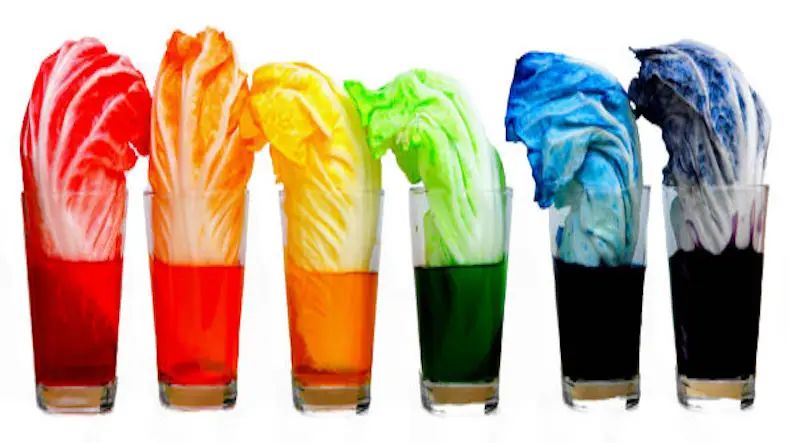Title: Colorful Cabbage - Exploring pH Indicators Experiment
Objective: To use red cabbage as a natural pH indicator and observe color changes in different solutions.
Materials:
- Red cabbage
- Blender or knife and cutting board
- Water
- Small bowls or containers
- Various household liquids to test (e.g., lemon juice, vinegar, baking soda solution, soapy water, milk, orange juice)
- Optional: Pipettes or droppers for transferring liquids
- Optional: pH test strips (available at some stores or online)
Procedure:
- Begin by discussing the concept of pH and pH indicators with the children. Explain that pH is a measure of the acidity or alkalinity of a substance and pH indicators are substances that change color in response to different pH levels.
- Gather the materials required for the colorful cabbage experiment.
- Cut the red cabbage into small pieces or blend it with water in a blender to create a cabbage juice extract. Add enough water to cover the cabbage.
- Strain the cabbage juice extract using a fine sieve or cheesecloth, collecting the liquid in a bowl.
- Divide the cabbage juice extract into small bowls or containers.
- Prepare the liquids you want to test by pouring small amounts into separate bowls or containers.
- Add a small amount of cabbage juice extract to each bowl or container, enough to cover the bottom.
- Observe and record any color changes that occur when the cabbage juice extract mixes with the different liquids. Note any changes in color intensity or hue.
- Optional: Use pH test strips to measure the pH of each liquid. Dip a strip into the liquid and compare the color change on the strip with the color chart provided with the strips.
- Discuss the color changes observed and relate them to the pH of the tested substances. Explain that red cabbage juice contains natural pigments called anthocyanins that act as pH indicators, changing color based on the acidity or alkalinity of the tested solutions.
- Reflect on the experiment and discuss the pH levels of common household substances. Emphasize the importance of pH in various everyday applications, such as cooking, cleaning and personal care.
Safety Considerations:
- Adult supervision is recommended, especially when using sharp tools and handling liquids.
This experiment allows children to use red cabbage as a natural pH indicator and observe color changes in different solutions. It promotes scientific observation, critical thinking and an understanding of pH and pH indicators. Enjoy the colorful exploration of pH with this engaging experiment.
Thanks for reading the article, for more Science and Technology related articles read and subscribe to peoples blog articles.














